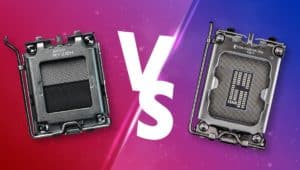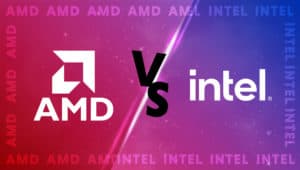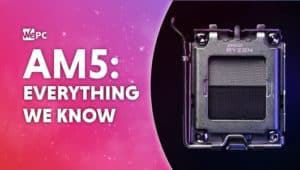Intel core I9-13900K vs Ryzen 7 5800X3D
We’re exploring the differences in specification between the 13900K and the 5800X3D and outlining which CPU would be better.
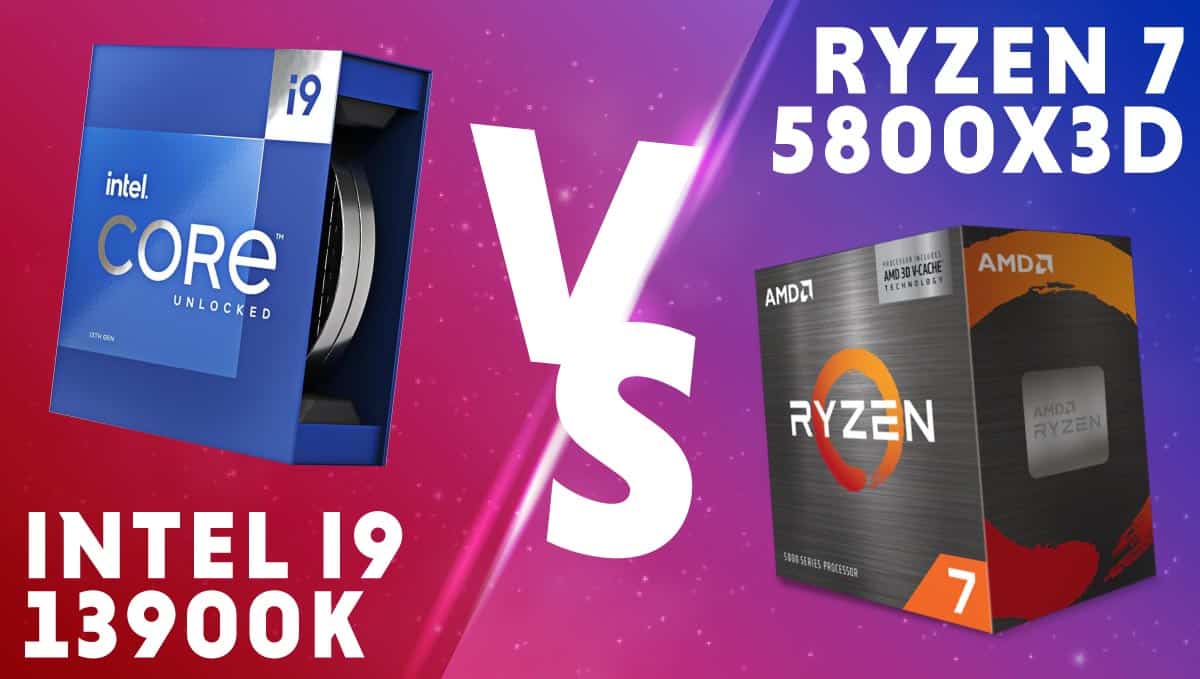
WePC is reader-supported. When you buy through links on our site, we may earn an affiliate commission. Prices subject to change. Learn more
Intel core I9-13900K vs Ryzen 7 5800X3D: Intel released its 13th-generation CPUs to the world on October 20th, 2022. The 13900K is a beast of a CPU, since its release, we’ve gathered all the info we need about Intel’s 13th gen flagship CPU, the i9-13900K. So we’re going to pit it against the CPU taking the world by storm, the Ryzen 7 5800X3D.
The 13th-generation CPUs are now available to purchase, and you can find them here:
But are the new 13th-generation CPUs worth it? Let’s find out.
Now read: Best LGA 1700 CPU cooler.
The upgrade to the 13th gen is something that can be done fairly easily compared to the upgrade on AMD’s platform from AM4 to AM5. All that’s required is the new CPU, as the 13th generation Intel CPUs are designed with the same socket, LGA 1700, as the 12th generation Alder lake CPUs.
Intel held its annual Innovation event, where we got a snippet of information regarding the Raptor Lake flagship before it was officially released. Intel CEO, Pat Gelsinger, stated that the Raptor Lake family will have a flagship CPU containing up to 24 Performance and Efficiency cores, up to a 15% better single-core performance gain, and up to 41% better multi-thread performance gain.
Continuum Micro Workstation PC (RTX 4090 & Intel i9-13900KF)
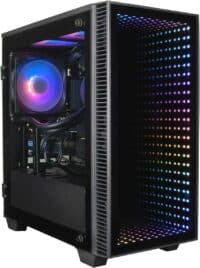
CPU
Intel 24-Core i9-13900KF
GPU
RTX 4090 24GB
RAM
64GB DDR5
Storage
2TB NVMe SSD + 6TB HDD
Differences in architecture between Intel and AMD
Intel’s 13th-generation CPUs use a core-splitting technology known as LITTLE.big. This technology incorporates the use of faster performance cores and smaller, more efficient efficiency cores.
How the split P-cores (performance) and E-cores (efficiency) work exactly is the performance cores are both hyperthreaded and clocked insanely fast. These are the cores that do all the heavy lifting hence the name ‘performance cores’.
Then there are the E-cores, which are not hyperthreaded and are clocked at lower speeds to be both power-efficient and performance efficient. This is achieved because E-cores aren’t forced to share resources as they aren’t hyper threaded.
However, in the case of the 13900K, half of the E-cores are hyperthreaded too.
The operating system then delegates tasks to either E-cores or P-cores based on a pre-scan by a task scheduler. It saves power by not running P-cores on tasks that aren’t that heavy and don’t require a lot of power.
Intel Core i9-13900K vs Ryzen 7 5800X3D: Specifications
When comparing any two PC components or peripherals, it’s important to analyze their specifications and look at them both comparatively. This will give us a good insight into how the two CPUs will perform in relation to one another.
Intel Core i9-13900k
The 13900K is designed to be the best of the best. It is Intel’s new flagship CPU for the Raptor Lake generation. Intel’s 13900K spares no expense when it comes to performance. Meaning you can expect to pay a pretty penny for it.
The specifications for the i9-13900K are as follows:
- Cores: P-cores 8 / E-cores 16
- Threads: 32
- Base clock frequency: P-cores 3 GHz / E-cores 2.2 GHz
- Boost clock frequency: P-cores 5.8 GHz / E-cores 4.3 GHz
- L3 cache: 36MB
- Default TDP: 125 W / 253 W boost.
- iGPU: Intel UHD graphics 770
AMD Ryzen 7 5800X3D

AMD Ryzen 7 5800X3D
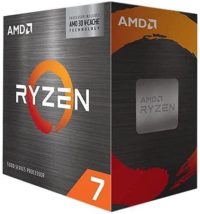
Cores
8
Threads
16
Max boost speed
4.5GHz
L3 Cache
96MB (64MB 3D V-cache)
TDP
105W
The AMD Ryzen 7 5800X3D is an adaptation of the base Ryzen 7 5800X, with 3D stacked V-cache. This has drastically improved the performance of the 5800X3D in games, but it suffers greatly due to the cache architecture as we’ll see soon.
Here are the specifications for the Ryzen 7 5800X3D:
- 8 cores
- 16 threads
- Base clock 3.4GHz
- Boost clock 4.5GHz
- L3 cache 96MB
- Default TDP 105W
- iGPU: N/A
13900K vs 5800X3D: Specification comparison
Here we will compare the on-paper specification of each CPU and look at them comparatively. This should help us gain a better understanding of how each CPU will perform against the other.
Core and thread count
The 13900K has a much higher core count than the 5800X3D, it also has many more threads.
Having a higher core count implies that your CPU will be better at multitasking natively. A higher number of cores means a CPU will also be better at workstation tasks that require many cores to complete in a timely manner.
The same can be said for threads, although threads are slightly different from cores. Threads are the name given to secondary instructions that a CPU completes simultaneously to its primary instruction.
In essence, a multithreaded CPU is a CPU with the ability to process two instructions simultaneously per core as opposed to just one. Almost doubling the CPUs base output, but not quite.
Core speed
The 13900K has a much higher cores boost speed than the 5800X3D
Core speed is pretty straightforward. The faster the cores boost speed, the faster that CPU core completes a cycle.
CPU cycles are composed of three main actions, these are fetch, decode, and execute. The faster this cycle is completed the more instructions get processed over X amount of time. This measurement also lends its hand to IPC and that’s instructions per clock, we’ll talk more on that later.
Cache
Surprisingly the 5800X3D is the winner here with 96MB of cache.
CPU Cache is a type of volatile memory that’s constructed physically close to CPU cores. This is what’s best in terms of performance as the closer it is to the component accessing its data, the quicker that data can be accessed.
So it’s a good idea to have a larger cache as it makes a huge difference when gaming. As gaming requires a lot out of the cache.
The cache built into the 5800X3D is a little different from the cache in the 13900K, allow us to explain.
The 2D cache is today’s standard CPU cache. The 2D cache is stacked laterally with smaller silicon dies being produced with each generation allowing space for more chiplets. The issue with a laterally stacked CPU cache is the spatial requirement.
Stacking the cache chiplets vertically, like in the 5800X3D drastically increases the number you can fit into one area, without compromising speed or efficiency. This vertical cache stacking has allowed AMD to pack 96MB of total L3 cache with access speeds of up to 2TB/s into the 5800X3D.
It’s for these reasons that the 5800X3D wins here, and it’s also the reason the 5800X3D is a lot better in terms of gaming than you may think.
Default TDP
The default TDP of the 5800X3D is lower, lower is better in terms of TDP.
TDP stands for thermal design power, and it is the maximum amount of thermal energy a component can produce under manufacture-defined operating conditions.
A higher TDP used to be indicative of a less efficient CPU. However, today TDP is usually indicative of a higher performance CPU and with the 12900KS starting at 150W we can see there’s way more thermal energy under this IHS.
It’s important to note the capabilities of your CPU cooler when upgrading your CPU as you may find your CPU overheating as your old cooler struggles to dissipate the heat your CPU is producing.
iGPU
The 13900K is the only CPU here with an iGPU.
An integrated Graphical processing unit is a nice feature. Although not meant for gaming, they can sometimes pack more of a punch than you might expect.
For example, the Intel UHD 770 graphics inside the 13900K pack a punch in light 720p and even 1080p gaming workloads. However, most iGPUs are there for display purposes only and aren’t meant for gaming workloads.
Performance
The 13900K is said to perform around 15% – 20% better than the 12900K. This means that the 13900K will probably perform around 10% better than the 5800X3D in gaming workloads, as the 5800X3D performed a little better than the 12900K in our testing.
That’s all well and good, but the 13900K will also dominate in multithreaded workloads, thanks to the fact it has double the cores and 24 more threads. And it’s clocked insanely high compared to the 5800X3D.
Where to buy Intel 13th generation CPUs
Sold on the latest Intel 13th generation CPUs? here’s where to buy the entire 13th-generation CPU lineup!
- Where to buy Intel Core i9-13900K
- Where to buy Intel Core i7-13700K
- Where to buy Intel Core i5-13600K
Final word
That’s not all she wrote, however. As it’s simply amazing that the 5800X3D can even stand up to the 13900K in any capacity. The 5800X3D also costs well under half the price. But you’re getting way more than half the performance.
The platform that the 5800X3D belongs to is also way less expensive, with DDR4 deals rampant and literally thousands of AM4 motherboards out there. Is the 13900K worth the expenses associated with supporting it? We hope you enjoyed this Intel core I9-13900KS vs Ryzen 7 5800X3D article.




